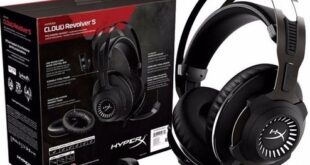Review Audio Technica is riding on the success of its iconic ATH-M50 headphones. And giving it a third lease of life with the ATH-M50xBT2 to conquer nomadic music lovers. This 2nd Bluetooth version is of course accompanied by many new features. Audio Technica ATH-M50xBT2 Date Release Freshly launched for the …
Gaming
Logitech Rally Bar Review : an all-in-one video conferencing
For almost a year and the start of the health crisis, many of us have been working from our homes. Thanks in particular to the latest webcams and headsets, we have been able to organize many meetings and online training during the past year. Faced with urgent demand, manufacturers have worked diligently …
Cooler Master Hyper 212 Black Edition REVIEW
Cooler Master Hypwer 212 Black Edition All-in-one liquid cooling systems, more commonly known as AIO, are on the rise these days. However, there are still a few users who swear by Aircooling to calm the ardor of their processor. We have others who have had some setbacks with their AIO …
Redragon K599 Keyboard Review Value For Money
Redragon Wireless Mechanical Keyboard Review If there’s one thing I appreciate about Redragon, it’s their commitment to having what feels like a million different SKUs at all times. This gives them the ability to release rarely seen form factors. Including the K585 Diti in addition to the more common TKL …
Hyperx Cloud Revolver S Review
Hyperx Cloud Revolver S Review – This new gaming headset marks a turning point at HyperX: new name, new look, new materials, new microphone. Above all, the manufacturer wants to seduce FPS enthusiasts by offering a model that would be studied for the practice of the genre thanks to excellent …
Logitech K750 Keyboard Perfect for Typing
Logitech K750 Keyboard Impresion Awireless keyboard that recharges using ambient light, this is the originality of the K750 Solar from the manufacturer Logitech. Simple gadget or quality keyboard? Here are our impressions. Among the myriad of keyboards that Logitech offers, the K750 Solar stands out with its solar panel charging …
ROCCAT ELO 7.1 AIR Headset Testing, Software Support
The Roccat Elo 7.1 Air is the brand’s first wireless gaming headset. Offered under the 100 € bar, it allows you to enjoy the comfort of wireless without breaking the bank and has a rather neat design for its price. The sound performance is decent, as is the battery life …
Razer Kiyo Pro High End Webcame Review
The Best Webcam of 2021? The Razer Kiyo Pro is a high-end webcam offered at around 200 €. It mainly targets players who are fans of streaming or professionals wishing to equip themselves with an efficient and easy-to-use solution for their video conferencing. It stands out with its HDR option …
Razer Orochi V2 Review, software and manual support
RAZER OROCHI V2 REVIEW The Razer Orochi V2 is a compact and ultralight mouse, capable of operating wirelessly via Bluetooth or 2.4 Ghz. Compared to the previous Orochi, its ergonomics are improved and its design can be customized from the Razer site. The mouse is positioned as an alternative to …
ROCCAT Burst Pro Extreme Lightweight Review, Software Update, Manual Guide
ROCCAT BURST PRO The Roccat Burst Pro offers excellent value for money if you are looking for a light and efficient mouse. Between its light weight, its perfectly flexible cable or its optical switches, it brilliantly combines performance and maneuverability while remaining affordable under the bar of 60 € . …
